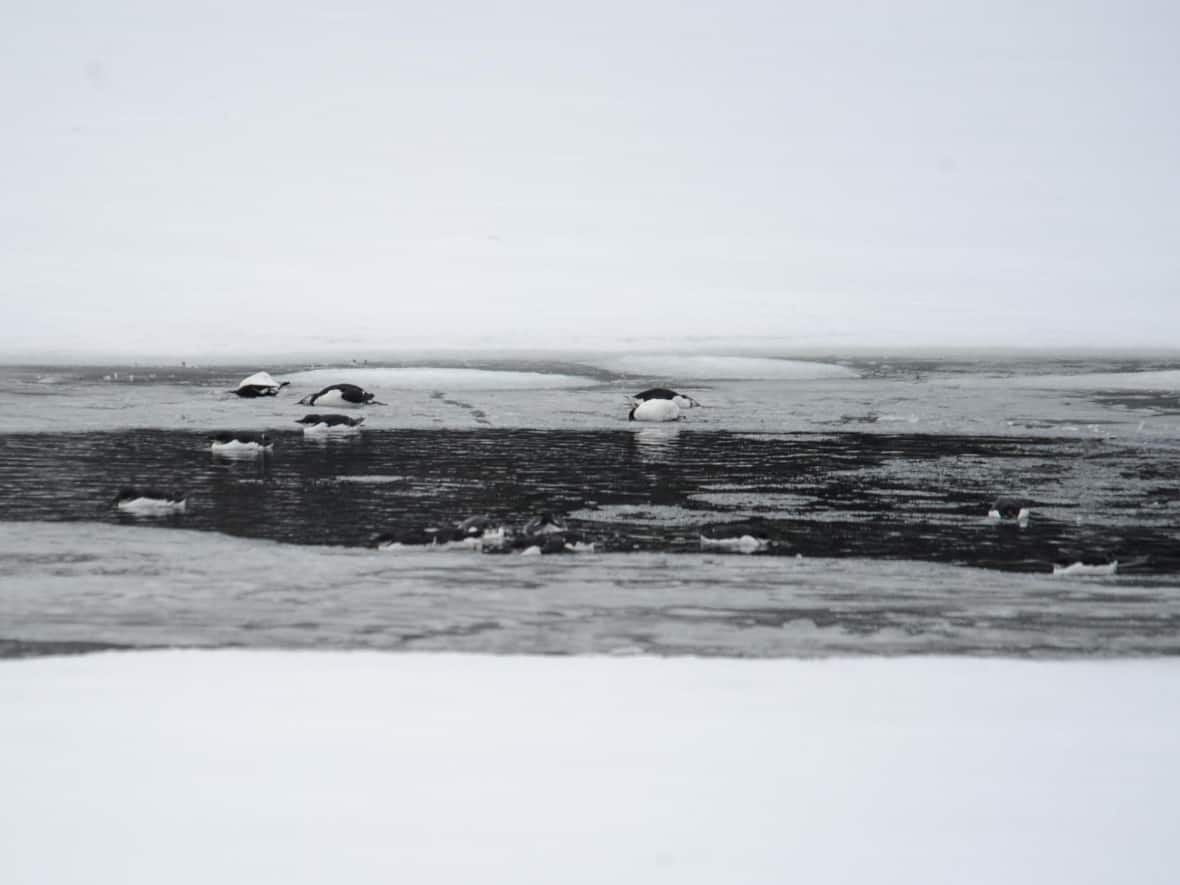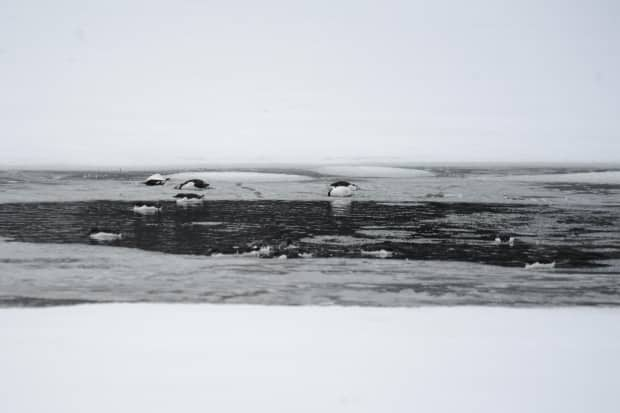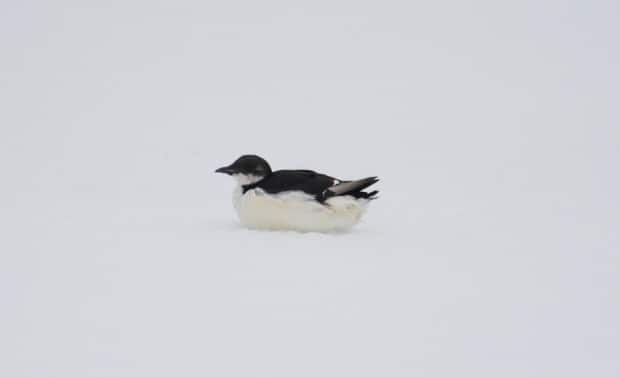Starvation led to die-off of murres in N.L., say scientists


Two weeks after hundreds of murres were found dead or dying near the town of Hampden on Newfoundland's west coast scientists say starvation is the likely cause of death.
Dead Arctic seabirds were also found in southern Labrador, Twillingate and Cape Freels around the same time.
Sabina Wilhelm, a wildlife biologist with the Canadian Wildlife Service, said Tuesday teams deployed to Fogo Island and Twillingate last week found more bird carcasses, collecting them for examination and autopsy in the animal health laboratory in St. John's.
"This time of year they feed primarily on fish and zooplankton. However sometimes the weather can sometimes push them inshore or the ice pushes them inshore and they just basically run out of enough food away from their usual foraging grounds," Wilhelm said.
"These birds have a very high metabolism so if they can't feed for several days they can very quickly become very weak and are unable to return to offshore."
Wilhelm said preliminary results also suggest the deaths were are not related to the avian flu.
While the number of birds found is unusual, Wilhelm said it's not uncommon this time of year to find some seabirds dead from being caught by sea ice in bay areas.

"It's a natural occurring event. However, with climate change we are predicting that severe weather systems may become more regular," she said.
"Certainly that's why we're keeping a close eye on it, just to monitor how frequently these events occur."
'This seems different'
Seabird expert Bill Montevecchi said most of the birds are thick-billed murres, which are migrating to the Arctic. He said their migration depends on the sea ice and the fish associated with the ice, including capelin.
"Here you have the information [that] the birds have starved. So now we need the possible causes," said Montevecchi.
Montevecchi said there are two hypotheses: either the birds are getting pushed too far toward the shore to reach the food they need or there's just not enough food. He said it's still too soon to know if their food source was contaminated.
"This seems different. It seems like the birds have had the opportunity to move and can move but somehow by the time they got inshore they were so emaciated," he said.
"This bird would normally weigh between 900 and 1,000 grams. These birds are coming in at less than 700."


